Deep in the tropical forest lies one of the largest and most powerful Maya cities. Thousands of different ancient buildings cover a huge area. Calakmul was a densely populated urban city, and not, as in the case of other cities, just an elite center surrounded by commoner residences. Estimated is that 50,000 people lived in the city, and the population throughout the kingdom it ruled calculated is at 1.5 million.
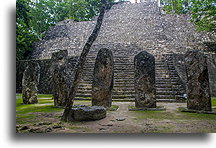
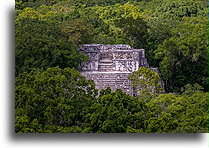
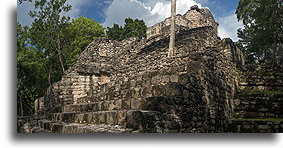
Calakmul reached its peak of development around the 5th century. Most of the city's history dominated was by a series of wars with Tikal, a powerful rival located 110 km/ 70 miles to the south. Many allied cities on both sides were also involved in the war, even those located as far as today's Honduras. Finally defeated, Calakmul lost its provinces and collapsed around AD 900 to be abandoned completely 100 years later. Tikal also weakened and was destroyed. The wars between two powerful cities may have contributed to the global decline of the Maya and the collapse of their civilization after AD 900.
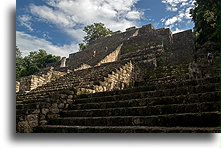
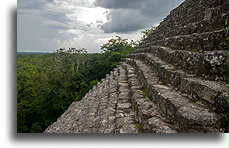
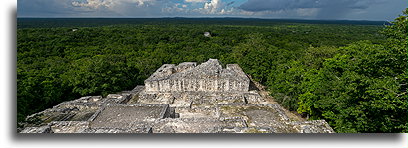
Throughout Mesoamerica, the tradition in construction was to take advantage of the previous buildings. The new construction encased the old one, carefully covering it. It was a practical way; new rulers erected higher and higher buildings. That is how Structure II was raised, one of the largest and the tallest in the world of the Maya. Inside this structure, hidden are seven other buildings built from the fifth century BC to the eighth century AD. The final massive-base pyramid is 50 m/ 16 ft high and was a heart of the city. Nine burial chambers were found inside the structure. At the top of the pyramid was a palace with many rooms and a steam room. The view from the very top is breathtaking, the endless evergreen forest and the tips of other Calakmul pyramids.
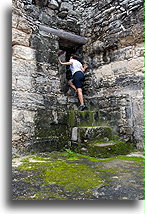
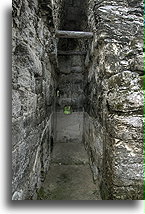
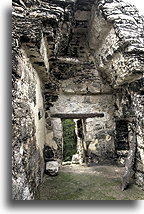
Structure III is a palace build in 6th century AD. It is an example of Petén architectural style. One of the rooms contained a tomb with rich offerings. It suggests that a ruler was buried here. Lack of major architectural changes suggest that the one of the last Calakmul dynasties lived in this palace
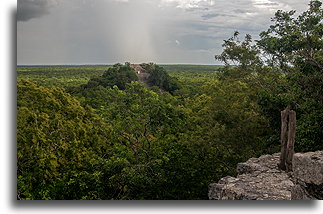
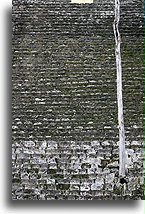
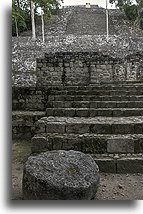
We were the last to leave Calakmul. Parking lot was completely empty. In about an hour, we arrived in Campamento Yaax’che, the place we stayed night before. The weather pattern is repeatable and highly predictable here. The rain started right after the sunset and continued until sunrise.




